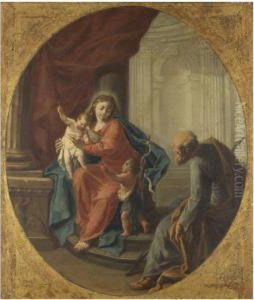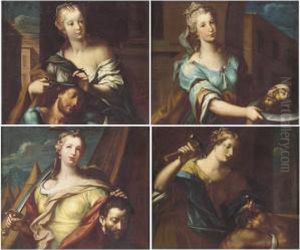Dalla Saverio Rosa Paintings
Salvator Rosa was an Italian Baroque painter, poet, and printmaker, who was active in Naples, Rome, and Florence. Born on June 20 or July 21, 1615, in Arenella, near Naples, Rosa was initially trained by his uncle, a painter of the region. Later, he studied under Jusepe de Ribera, a prominent painter who had a significant influence on Rosa's early work.
Rosa's work is characterized by its dramatic intensity, romantic appeal, and often stormy landscapes. He was also known for his satirical pieces and for being something of an artistic rebel, often choosing subjects that went against the mainstream preferences of his time. His paintings often depicted wild landscapes and seascapes, battle scenes, and witchcraft, which were not considered traditional or popular themes during the Baroque period.
Rosa moved to Rome around 1635, where he began to establish his reputation as a painter of landscapes and battle scenes. It was here that he started to develop his distinctive style, which included elements of the natural world depicted in a sublime and often turbulent manner. In the 1640s, he spent some time in Florence, where he became involved with a group of poets and intellectuals and started to engage in the literary aspects of his career, writing satires that criticized the artistic and political establishment.
After his return to Rome, Rosa's work continued to evolve, and he began to focus more on history paintings with moral or philosophical themes. Despite his contentious relationship with the art establishment, Rosa attracted a number of patrons and his work was sought after. His self-portraits and the series of etchings he produced also contributed to his legacy, showcasing his technical skill and innovative approach to composition.
Salvator Rosa passed away in Rome on March 15, 1673. His legacy lives on through his artistic contributions that reflect a unique blend of Baroque sensibility and proto-Romantic elements. Rosa's works can be found in many major museums around the world, and he remains an important figure in the study of 17th-century Italian art.

